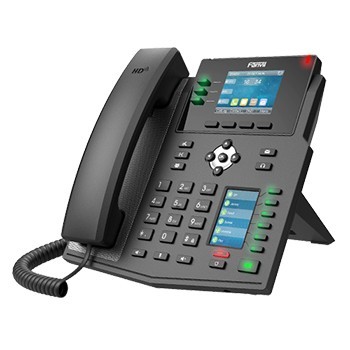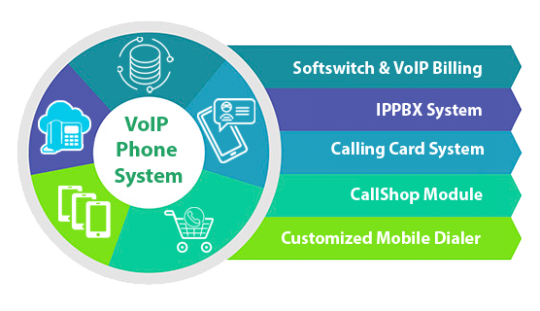#VoIPProvider
Text
youtube
#VoIP#CloudTelephony#VirtualPBX#UnifiedCommunications#BusinessPhoneSystem#HostedVoice#CallCenterSolutions#CloudCommunication#IVR (Interactive Voice Response)#TelecomTechnology#VoiceOverIP#SIPTrunking#DigitalPhoneSystem#CloudCalling#VoicemailServices#RemoteWorkCommunication#CallRouting#VoIPProvider#CloudTelecom#TelephonyTrends#Youtube
0 notes
Text
AKOM Technologies, a well-known national distributor specializes in providing VOIP services for both the IT and telecommunications sectors. The hardware needed for a particular VoIP solution may differ depending on the provider. Some providers have their own designated phone systems, while others are compatible with any type of proprietary VoIP phone. Our extensive range of cutting-edge VoIP services includes GSM Gateway, IPBBX, PRI Gateway, PRI Card, Voice Logger, FXS/FXO Gateway, Headsets, and more.
VOIP Services
#tumblr#trending#akomtechnologies#milestone#post of the day#information technology#voipservices#gsmgateway#voipgateway#voipsolutions#microblogging#ippbx#fxogateway#fxsgateway#voipprovider#gsm#gateway#cloudservices#voltegateway#gatewayprovider#communication
1 note
·
View note
Photo

VoIP routes are typically managed by VoIP service providers, who use specialized software to route the calls through the most optimal paths available. These routes may be based on various factors, such as the availability of bandwidth, network congestion, or the quality of service requirements of the call. Click the link in the bio to learn more.
For more information:
🌎 Visit:- https://www.acepeakinvestment.com/ 📲
Contact:- + 65 3158 376
📧 Mail:- [email protected]
#voiproutes#VoIPService#CommunicationSolutions#SmallBusiness#Entrepreneur#TechSolutions#VoIPProvider#BusinessCommunication
0 notes
Text
Voice Termination Unveiled Essential Techniques for Optimizing Call Quality and Reducing Costs

Introduction
Voice termination is a crucial component in telecommunication that involves routing and completing calls to their final destination. It essentially connects callers with the recipients they are trying to reach, ensuring that communication happens smoothly and effectively.
The importance of voice termination lies in its direct impact on both call quality and operational costs. High-quality voice termination ensures clear, uninterrupted conversations, while efficient cost management helps businesses control expenses and avoid unexpected charges.
In this blog post, we'll explore essential techniques to optimize call quality and reduce costs associated with voice termination. By understanding and applying these strategies, businesses can enhance their communication services while managing their budgets more effectively.
Understanding Voice Termination
Definition and Basic Concepts
Voice termination refers to the process of completing a phone call from its origin to its intended destination. It involves converting the call data into a format that can be transmitted over various networks and ensuring that the call reaches the recipient without interruption. Essentially, it’s the final step in a call's journey through a telecommunication network.
The Role of Voice Termination in Communication Networks
In communication networks, voice termination plays a pivotal role by bridging the gap between different network systems. It handles the transition from one network, such as a VoIP (Voice over Internet Protocol) network, to another, such as a traditional PSTN (Public Switched Telephone Network) or mobile network. This process ensures that calls made from one network can reach recipients on different networks seamlessly.
Effective voice termination is crucial for maintaining high call quality and reliability. It impacts factors like call clarity, connection stability, and the overall user experience. By managing how calls are routed and terminated, service providers can enhance communication efficiency and customer satisfaction.
Selecting the Right Voice Termination Provider

Choosing the right voice termination provider is essential for ensuring reliable and high-quality communication. Here are key criteria to consider:
1. Reliability
Uptime: Look for providers with a proven track record of high uptime. Consistent service availability minimizes the risk of dropped calls and disruptions.
Performance: Evaluate the provider’s ability to handle high call volumes and peak traffic periods without degradation in call quality.
2. Network Infrastructure
Coverage: Ensure the provider has a robust network infrastructure that supports a wide geographic area and integrates well with various networks.
Technology: Check if the provider uses up-to-date technology and standards, which can enhance call quality and efficiency.
3. Service Quality
Call Clarity: Assess the provider’s ability to deliver clear, uninterrupted calls. This includes low latency and minimal packet loss.
Support Services: Good providers offer comprehensive support, including troubleshooting and technical assistance to resolve issues promptly.
Importance of Provider Reputation and Customer Support
A provider’s reputation reflects its reliability and quality of service. Research customer reviews and industry feedback to gauge the provider’s performance and reliability. Additionally, strong customer support is crucial for addressing any issues that arise. Effective support ensures that problems are resolved quickly, minimizing disruptions and maintaining service quality.
Techniques for Optimizing Call Quality
1. Monitoring and Measurement
To ensure high call quality, it's essential to monitor and measure key performance metrics:
Jitter: This refers to variations in packet arrival times. High jitter can cause choppy or garbled audio. Tools like VoIP monitoring systems can help track and manage jitter levels.
Latency: The delay between sending and receiving data. Low latency is crucial for real-time conversations. Use network performance tools to measure and minimize latency.
Packet Loss: This occurs when data packets are lost during transmission, leading to interruptions in the call. Monitoring tools can detect packet loss and help in diagnosing the root cause.
2. Quality Routing
Intelligent routing improves call efficiency and reduces congestion by directing calls through the most efficient network paths. This involves:
Dynamic Routing: Adjusting call routes based on real-time network conditions to avoid congested or unreliable paths.
Least Cost Routing (LCR): Choosing routes based on cost-effectiveness while maintaining quality, ensuring that calls are completed efficiently and economically.
3. Network Optimization
Maintaining a stable network environment is crucial for consistent call quality:
Bandwidth Management: Ensure adequate bandwidth allocation for voice traffic to prevent congestion and ensure smooth call performance.
Network Segmentation: Isolate voice traffic from other types of data to reduce interference and enhance quality.
Regular Maintenance: Perform routine network checks and updates to address potential issues before they impact call quality.
Strategies for Reducing Costs

1. Negotiating Rates
To secure the best pricing from voice termination providers:
Compare Quotes: Obtain quotes from multiple providers to understand the market rates and identify the best offer.
Negotiate Terms: Leverage your findings to negotiate better rates or favorable terms. Highlight your volume of calls or long-term commitment to gain leverage.
Review Pricing Models: Understand different pricing structures, such as per-minute rates or flat fees, and choose the one that aligns best with your usage patterns.
2. Leveraging SIP Trunking
Session Initiation Protocol (SIP) trunking can offer significant cost savings and scalability benefits:
Reduced Costs: SIP trunking often replaces traditional phone lines, which can be more expensive. It allows for cheaper rates for both domestic and international calls.
Scalability: Easily scale your communication capacity up or down based on demand without needing additional physical lines or hardware.
Integration: SIP trunking integrates with existing VoIP systems, simplifying management and reducing overall infrastructure costs.
3. Efficient Usage
Managing call volumes and optimizing usage helps avoid unnecessary expenses:
Monitor Usage Patterns: Track call volumes and identify peak times to better understand your needs and adjust service plans accordingly.
Implement Call Controls: Set up restrictions or limits on international calls or premium-rate numbers to prevent excessive charges.
Optimize Call Routing: Use intelligent routing to direct calls through the most cost-effective paths, reducing overall costs while maintaining quality.
Implementing Security Measures
1. Fraud Prevention
To protect against toll fraud and unexpected charges:
Set Up Fraud Detection Tools: Use specialized software to monitor and analyze call patterns. These tools can identify unusual activity that may indicate fraud.
Implement Call Restrictions: Limit access to high-cost destinations or premium-rate numbers to reduce the risk of unauthorized use.
Regularly Review Billing: Conduct frequent audits of your billing statements to spot discrepancies or irregular charges that could signal fraud.
2. Monitoring and Alerts
Establish systems to detect and respond to suspicious activity:
Real-Time Monitoring: Use real-time monitoring systems to keep an eye on call traffic and identify anomalies as they occur.
Set Up Alerts: Configure alerts for unusual activities, such as spikes in call volume or high-cost calls, so you can quickly investigate and address potential issues.
Automated Reports: Generate regular reports to track usage patterns and spot trends that may indicate security concerns.
Future Trends in Voice Termination

1. Emerging Technologies
Several innovations are set to impact voice termination:
AI and Machine Learning: Artificial intelligence (AI) is increasingly being used to enhance call quality and network management. AI algorithms can predict and mitigate network issues, optimize routing, and improve fraud detection.
5G Technology: The rollout of 5G networks promises faster and more reliable voice termination. With lower latency and higher bandwidth, 5G enhances call quality and supports higher volumes of simultaneous calls, benefiting both users and providers.
2. Industry Trends
The evolution of voice termination is shaped by several key trends:
Integration with Unified Communications: Voice termination is becoming more integrated with unified communication systems, offering seamless connectivity across voice, video, and messaging platforms.
Increased Focus on Cost Efficiency: As competition grows, providers are offering more cost-effective solutions and flexible pricing models, which can lead to reduced costs for businesses.
Greater Emphasis on Quality Assurance: With advancements in technology, there is a stronger focus on maintaining high call quality and minimizing disruptions. Providers are investing in better infrastructure and quality control measures.
Conclusion
In summary, effective voice termination is crucial for ensuring high call quality and managing costs efficiently. Key strategies include selecting reliable providers, monitoring and optimizing call quality, and implementing cost-saving measures such as SIP trunking and intelligent routing.
By focusing on these areas, businesses can enhance their communication services, reduce expenses, and improve overall user satisfaction.
Adopting a strategic approach to voice termination not only addresses immediate operational needs but also prepares you for future advancements in technology and industry trends. Ensuring that your voice termination processes are well-managed and adaptable will help you maintain a competitive edge and support seamless, high-quality communication.
#telecommunications#wholesale voip#internet#voicetermination#voiptermination#telecomservices#voiptechnology#wholesalevoip#telecomsolutions#globalvoicetermination#voipproviders#telecominfrastructure#voiproutes
0 notes
Link
Google Duo es un servicio propietario de VoIP y videotelefonía desarrollado por Google y disponible para Android, iOS y navegadores web. Esto permite a los usuarios realizar y recibir llamadas de voz y video grupales y en vivo con otros usuarios de Duo en alta definición con encriptación de extremo a extremo de forma predeterminada.
#google duo#GoogleDuo VoIP voipservices voipphone voipphone voipphone voipsolutions voipprovider video telefoniamovil telefoniacelular
0 notes
Text
MobileDialer #voip #voipservices #mobileapps #android #iPhone #voipbusiness #voipsolutions #voipprovider #voipphone #voipsystems #voipbusinessphone #VoIPMobileDialer #oTTMobileDialer #WhitelabelMobileDialer #AndroidMobileDialer #iPhoneMobileDialer
0 notes
Photo

Unlock unbeatable savings with wholesale VoIP termination rates. Enjoy premium voice services without breaking the bank. Upgrade your communication infrastructure and optimize your business operations today.
For more information : https://www.mycountrymobile.com/blog/wholesale-voip-termination-rates/
Contact Us :
👉 Email:- [email protected]
👉 WhatsApp:- +1 (917) 4447882
#MaximizeSavings #VoIPTermination #WholesaleSolutions #PremiumVoiceServices #AffordableRates #OptimizeBusiness #CostEffectiveCommunication #UpgradeInfrastructure #BusinessOperations #SaveOnCommunication #VoIPProviders #BusinessConnectivity #OptimizedSolutions #ConnectWithQuality #CommunicationUpgrade
0 notes
Photo

It is the time to say goodbye to the voice lagging and other quality related issues. Eliminate these issues by replacing your existing service with Reliable Home Phone Service.
Keep in touch - Mobility Yearly - Unlimited* VoIP Calling To India
#voip#voiceoverip#bestvoipservice#telecommunications#voipprovider#homephoneprovider#voipsystem#voipapp
0 notes
Link
Super Services of Hosted VOIP New York
Setting up the networks of Hosted VOIP New York brings into impact the ‘Unified Communications and Collaboration’. If you wanting to go for the VOIP, search for the new deals at NetSoft!
0 notes
Photo

Fanvil IP Phones X4U Enterprise IP Phone.
2 notes
·
View notes
Photo

Say goodbye to roaming charges when you purchase AcePeakInvestment’s calling cards today. Make sure you stay connected with loved ones abroad and have amazing conversations from wherever you may be; all at pocket friendly prices. Pick up your card now and start talking for less!
For more information:
Visit:- https://lnkd.in/g4TPpKtv
Contact:- + 65 3158 3765
Mail:[email protected]
0 notes
Photo

Business VoIP Phone Service
Looking for the best VoIP service and business VoIP phone service? We provide reliable business VoIP phone service and VoIP service in Las Vegas. We have the reputation for being the best available business VoIP phone service and the best customer service.
for more info: https://bit.ly/3a2cF3u
#PhoneCompanies#PhoneCompany#VoIPProviders#VoIPPhoneSystem#BusinessPhoneSystems#VoIPService#VoIPServiceProviders#PhoneSystemsforSmallBusiness#BestVoIPService#BusinessVoIPPhoneService#PhoneServiceUSA
0 notes
Text
Everything You Want to Know About VoIP
Hard phonesSoftphones
What is VoIP?
VoIP stands for Voice over Internet Protocol, and it refers to a combination of different technologies, protocols in particular, that work together to deliver voice communication over internet networks.
It is mainly used for telephony, where VoIP is used as an alternative to regular landlines that use PSTN or the traditional public switched telephone network.
What is a VoIP Provider?
VoIP service providers refer to third-party vendors that offer VoIP internet telephony solutions to customers. They leverage the technology as a cost-effective and, in a lot of ways, a better alternative to traditional landlines.
Most of the time, VoIP providers for business use it as the telephony component of a system that can be used by organizations not only to make and receive calls, but also to manage and route incoming calls.
What is a VoIP System?
A VoIP system or a VoIP phone system is a business phone solution that leverages Voice over IP as its main telephony component.
It is usually combined with PBX technology (https://www.ringcentral.com/small-business/blog/pbx-telephone-service/) for managing incoming calls. While VoIP is responsible for allowing users to make and receive calls, the PBX component answers all incoming calls and directs them to the right extension or department.
PBX can either be on-premise or cloud-based. On-premise PBX is housed within the company’s office building. It requires expensive and bulky hardware, like servers and physical PBX boxes. Since these are expensive and their installation can be costly, it would require significant capital investment from the business.
That is the reason why a lot of modern VoIP-based phone systems use cloud-hosted PBX for their call management features. Cloud PBX is hosted in the VoIP provider’s data center and is delivered via the Internet—similar to the way VoIP is set up. As a result, companies no longer have to buy new hardware or build IT infrastructure to support it.
These systems have also evolved into complete cloud communications solutions that offer more than just telephony and call management.
One of the newer features included is web conferencing, which allows multiple people to join the same call (even from different locations). These conference calls can be purely audio or can come with video. While the protocols for these meetings are pretty much the same as physical meetings, there are subtle differences like having to pay attention to who’s turn it is to speak to avoid confusion. Proper video meeting etiquette (see https://www.ringcentral.com/small-business/blog/business-voip-meeting-etiquette/) should be observed to keep everything professional.
How does VoIP work?
As said above, VoIP is made up of different sets of technologies working together to imitate the functionality of landlines. Some of these include:
Session Initiated Protocol (SIP) – used for signaling, which is used to establish, manage, and terminate connections. It is the part that rings the phone and then ends the connection when the call is over.
Real-Time Transport Protocol (RTP) – used for carrying the audio or video streams during actual VoIP transmissions.
Transmission Control Protocol (TCP-IP) or User Datagram Protocol (UDP) – depending on your provider, these protocols are the ones responsible for delivering VoIP protocols over the Internet. TCP-IP guarantees that data is delivered; and, if data is lost during transmission, the data will be retransmitted. IT prioritizes quality over speed. UDP, on the other hand, sends IP packets without any guarantees that it will be received. It will not resend the signals even if data is lost. It prioritizes speed over quality.
Codecs – these are used to convert analog audio (like your voice) into a digital format that can be sent over IP networks. When it reaches the other side, codecs are also used to convert the digital data to analog so the receiver can understand it.
Gateways – These are what allows VoIP transmissions to communicate with traditional landlines. What it does is that it converts traditional telephony connections into VoIP connections, and vice-versa. This way, landlines can communicate with VoIP digital lines can communicate as if they were using the same technology.
While the overall process of VoIP can be complicated, know that all these components work together in real-time to ensure that you have a regular conversation over VoIP lines.
How to use VoIP
You can make or receive VoIP calls from a variety of ways. There are generally two classifications on methods on how you can make calls using VoIP: you can use hard phones or you can use softphones.
Hard phones refer to physical telephones that are designed to allow VoIP transmissions. Some of the most common types include:
Desk IP phones – These are VoIP phones designed to mimic the look of a regular landline. But do not mistake it for a regular telephone; these are computing devices that are explicitly made for VoIP calls.
Conference phones – Also referred to as starfish phones because of their design, these are IP phones that made specifically for conference calls. Instead of being handheld, this works through a high-powered speaker and mic so that more than one person can use it to communicate with people operating from another location.
Reception phones – For businesses who prefer to have a human receptionist, these phones are IP phones that include an attached module which helps receptionists route calls to different extensions and departments.
These are software and applications that you can install in your computers, laptops, or mobile devices (like your cell phone or tablet), which will allow you to make and receive VoIP calls through them.
Most VoIP providers have separate softphone software for MAC and Windows computers and laptops and separate applications for iOS and Android mobile devices.
While the software and applications are different based on the operating system, most of the functionalities are still the same.
Conclusion
VoIP has emerged as a cost-effective alternative to landlines by means of leveraging different technologies that allow users to make and receive calls over the internet. Modern VoIP solutions providers have also embraced the cloud to equip companies with a business phone system that not only allows for online calls and call management, but also has added features like video conferencing.
The best part is that because it uses the internet, VoIP systems can be accessed and used with practically any device a user prefers: from hard phones that are designed for VoIP or through computers and mobile devices through a VoIP softphone app or software.
0 notes
Photo

VoIP Phone System - A Complete Solution to start VoIP Business.
VoIP Phone System is specifically developed solution for VoIP service providing business. Our solution is Advanced, more efficient and durable. It is specifically developed and designed to meet all requirement of any VoIP Provider. Our each client get the assurance of perfect installation and skilled implementation with this solution. Additionally we provide free tech support.
VoIP Phone System Includes:
1. VoIP Switch, Billing & Calling Card System
2. Android Mobile Dialer
3. iPhone Mobile Dialer
4. Website
5. Technical Support
For live support and more information - https://www.antoniasolution.com/voip-phone-system/
For live discussion connect on-
Skype - info.antoniasolution
Whatsapp +919313870570
Email - [email protected]
#VoIP #Softswitch #VoIPSwitch #VoIPBilling #VoIPPhone #Callingcard #ASTTP #freeswitch #PBX #CallShop #Callback #IVR #SIP #Softphone #SIPDialer #Mobiledialer #Voipdialer #Mobilevoip #VoIPSystems #SIPTrunking #Software #Development #Services #IT #Solution #Webs #Website #Apps #application #CRM #ERP #BPO #Callcenter #voipsoftwaresolution #WebDesign #customsoftware #cloudsolution #cloudvoip #cloudservices #mobileapplication #mobileapps #Opensource #Customization #branded #IPSystem #IPPhones #branding #freeapp #itdevelopment #iosapps #unifiedcommunication #voipcalling #sipsoftphone #callingcards #freedialer #callingcarddialer #amcs #crmsoftware #itsolutions #appdevelopment #voipproviders #wholesalevoip #callingcardbusiness #callcenterbusiness #callcentersoftware #businessvoip #voipbusiness #unifiedcloud #videocalling #voipsystem #softwarecompany #cloudsolutions #hostingservices #hostedservices #Bestsolution #Bestservices #Bestitcompany #Bestserviceprovider #Bestvoipprovider #BestVoip
#voip#phone#system#softphone#dialer#voipphonesystem#voipsoftwaresolution#voipphones#call center#bpo#auto dialer#ipphones#iphonesolution#software#serverices#cloud#server#hosted solution
2 notes
·
View notes
Photo

With extensive features and numerous customizable calling plans, our users can have unlimited calling without any break.
#unlimitedcalling#voipcalling#voipapp#voipservices#voipprovider#telecommunications#homephonesystem#homeservices#tumblr
0 notes
Text
The Unique Features of VoIP Technology
VoIP technology is the most used technology for all communication purposes of the present day. VoIP stands for Voice over Internet Protocol. What makes VoIP different from the age-old PSTN is the form of the network it uses. While PSTN uses circuit switched network, VoIP uses the packet switched network. VoIP Call is the easiest and most convenient way to make any calls to local as well as international destinations. The usage of internet protocol for call transmission is the reason behind the low-cost factor. The primary requirements being the internet connection and the application or the app or mobile dialer on both ends of the call. And if calls are made using VoIP credit, then internet connection and dialer are necessary only on the dialling end.

Features
Among the numerous ones, here are the top features that help VoIP Technology stand out.
UC Collaboration
UC stands for Unified Communication. Unified Communication refers to a phone system that unifies multiple communication methods within a business. With the help of WebRTC, the merging of VoIP and UC services into viable apps act as a replacement of email. These apps use the features of VoIP Technology and UC and bring out features like chat, instant messaging, video conferencing and lot more.
Integration with Cloud & Cloud-based Tools
Cloud makes it possible for various platforms to integrate with each other. Because of the Cloud-based platforms, and tools and products utilizing APIs, integration of VoIP is possible with numerous other systems. The integration of VoIP Technology with the cloud improves company-client communication and also increases the efficiency of the customer support system.
Integration with IOT
IOT stands for Internet of Things. As IOT and VoIP work on the same standard Internet Protocol, this makes the integration of both possible. Integration of VoIP with IOT is useful for auto-dialling a phone number in an emergency, controlling IOT devices via analogue phone and monitoring smart objects via VoIP phone.
Auto-Attendant
The term auto-attendant in telephone describes a voice menu system that transfers callers to an extension without going through a telephone operator or receptionist. As a feature of VoIP Technology, auto attendant enabled systems to handle call management effectively and reduces the costs of call processing.
VoIP Call Features
VoIP Calls are the most known part of VoIP Technology. These are important for both individuals for personal use or for various sectors for business purposes. Some of the VoIP Call features are: 3-Way Calling, Call waiting and transfer, redial, caller ID, Call forward, web-integrated voice mail, an attachment containing caller’s message to mail and sent to any computer.
To know more about VoIP Service Providers, read our blog on it. To read more click here: Top 8 Features of VoIP Technology
Also, you can visit INAANI which is a trusted global VoIP service provider, offering the best Retail and Wholesale VoIP Services.
0 notes